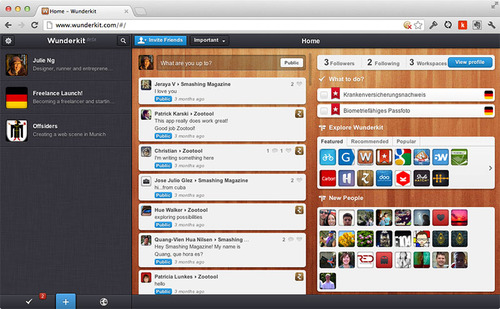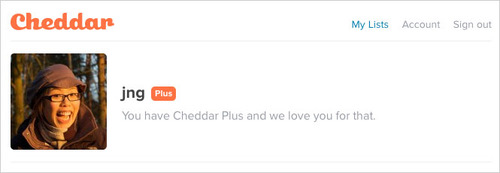The internet startup model is broken and how to fix it
The market for internet companies is broken. We cannot continue starting companies with millions in venture capital and no business model from day one that generates revenue, and more importantly profit.
Don't rejoice at Facebook's plummeting stock. It's an ominous sign for us all. Companies are willing to pay boatloads for great designers and developers in part because they believe we will make the difference and help them become the next Apple or Google. When that bubble pops, many of our salaries may also pop.
 Zero funding vs $7 million
Zero funding vs $7 million
Big leads to big costs, not big profits
We often talk about how cheap and easy it is to start an internet company today thanks to software as a service (SaaS) companies like Amazon Web Services (AWS). Many dev tutorial site talks you through building a twitter clone. But while it is easy to build the functionality, the behind-the-scenes infrastructure costs to receive and store terabytes^1 of data every day is not cheap. So building Twitter skeleton functionality is cheap. But running Twitter, supporting millions of users while making sure it loads fast, is not.
Small in a small market (Instapaper vs Pocket)
But many startups want to bring service X to the masses. Founders dream of revolutionizing a service or changing human behavior through scale and breadth.
Pocket, formerly Read it Later, is such a company and has already received over $7 million in funding without generating a dime. With that money that've hired some great designers to relaunch their brand. And they're looking to "expand" to more platforms. But the service is free.
How does it expect to make money? And can it make money? At least $7 million, which only pays back the investors, who will probably want more than that.
Reasonable prices and reasonable costs
Instapaper has been profitable from day one. The apps currently costs $2.99 and users can subscribe at $1 / month for extra features like search. When developer Marco Arment dropped the free version in 2011, people hardly noticed and sales increased!
One dollar. A month. That is probably a realistic cost too for the service. We're not paying for content, but rather the ability to read it offline, in a stripped down version, and in my case to archive articles I like.
If one dollar a month is the reasonable market price for such a service, costs have to be lower to make such a service profitable. So I don't see how company with millions in cost can be profitable, even in the long run. Because in the long run there market is not that large and there are too many free alternatives.
Pocket is prettier, maybe even better. I've tried it, but I don't use it. I don't want to support an unrealistic industry.
Be real.
The market is not big enough for big, just you
Be real and be profitable from day one. I admire such companies. Those companies often turn out to be single persons or small teams. I don't think a service like Instapaper can survive on the scale of Pocket. The demand just isn't there to finance large and expensive teams.
Paying for a real and sustainable web - Cheddar vs Wunderlist
A year ago I was excited about 6Wunderkinder, one of Germany's first and original startups. They are developing Wunderkit to change how we organize and collaborate on projects. 6Wunderkinder has received $5 million in funding. But Wunderkit is free. And Wunderlist will always be free. So how are they going to make money?
 I really want 6Wunderkinder to succeed but their product looks like a game, not a useful service.
I really want 6Wunderkinder to succeed but their product looks like a game, not a useful service.
Part of me wants a German startup to really take off. But part of me sadly doubts it will be 6Wunderkinder. We have enough todo apps in the market that sync across devices. People don't need to pay for that. So what will you pay for?
I am paying for a real web. I subscribed yearly to cheddar at a mere $19.99 a year. I like it. I also admire solo developer Sam Soffes for quitting his job, starting a company and sticking to his guns, not selling when an offer came along.
I do not support App.net, however. I don't think it will succeed in the long run. I love the principles behind it. But I don't think $50 a year can sustain a twitter-like service and still be useful to me. To be useful, it needs scale. We're not just interested in other developers and designers but also Tweets from God, Yoda, as well as the New York Times and Obama. And for that type of scale, a company needs revenue. And advertisers are always willing to be pay more than we are. They're here to stay. Deal with it.
So what does $5 million but free get you what $20 / year does not? A very pretty app that looks more like a game than something useful. That's the result of talented but expensive designers. I signed in for the first time in months and saw very little "active" activity. Pretty, but not useful.
 Cheddar supports features like cloud syncing, pushed updates and Markdown but lacks visual fluff.
Cheddar supports features like cloud syncing, pushed updates and Markdown but lacks visual fluff.
Support Instapaper and Cheddar
Especially if you are a designer or a developer, support Instapaper, Cheddar and any other service that you find useful and sustainable. These applications offer products and services at a reasonable prices and costs. You are not supporting outside investors or bloated marketing teams. You're supporting real web workers, real designers and developers like yourself.

Aww, I love you too!
